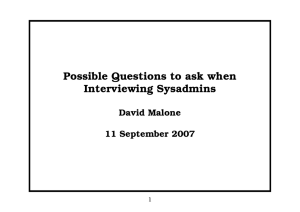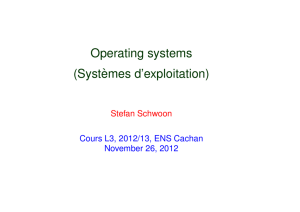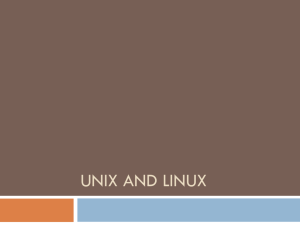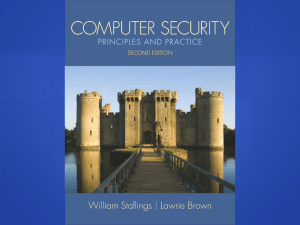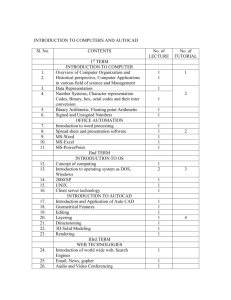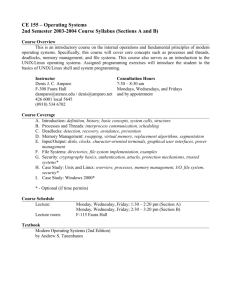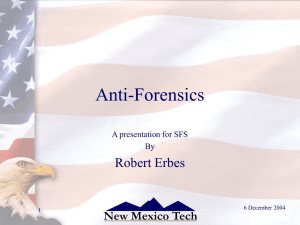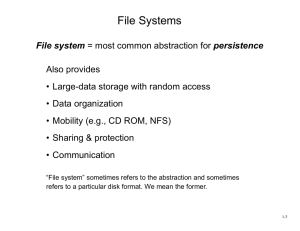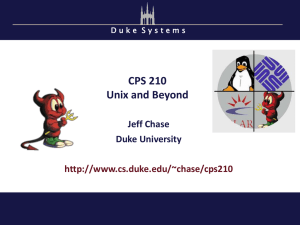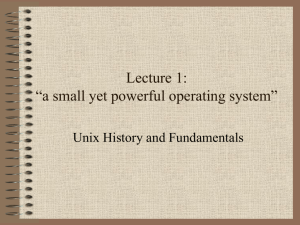Access Control
advertisement
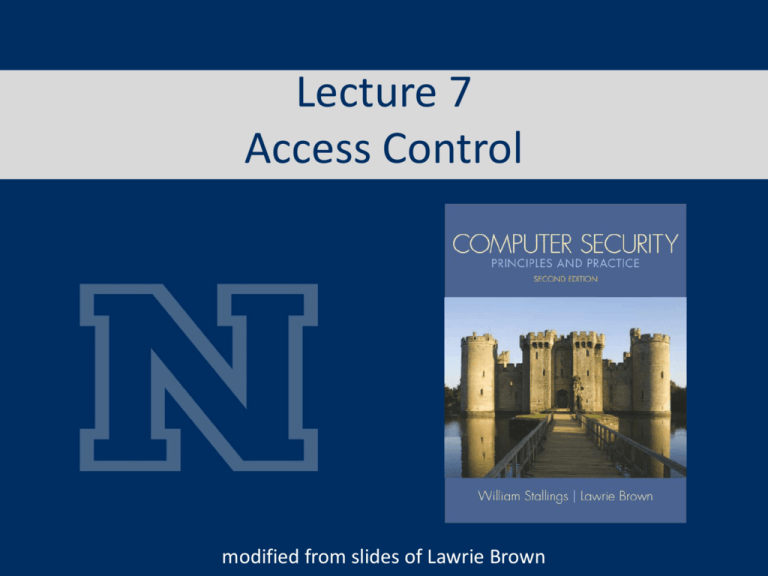
Lecture 7 Access Control modified from slides of Lawrie Brown Access Control • ITU-T Recommendation X.800 definition: – “The prevention of unauthorized use of a resource, including the prevention of use of a resource in an unauthorized manner.” • RFC 2828 defines computer security as: – “Measures that implement and assure security services in a computer system, particularly those that assure access control service”. Access Control Principles Granting of a right or permission to an entity to access a system resource. Verification that the credentials of a user or an entity are valid. An independent review and examination of system records and activities Access Control Policies • dictates – what types of access are permitted, – under what circumstances, – by whom. based on the identity of the requestor and on access rules based on the roles and their accesses based on comparing security labels with clearances Access Control Requirements • • • • • • • • reliable input support for fine and coarse specifications least privilege separation of duty open and closed policies policy combinations and conflict resolution administrative policies dual control Access Control Basic Elements subject entity capable of accessing objects •concept equates with that of process •typically held accountable for the actions they initiate •often have three classes: owner, group, world object resource to which access is controlled access right: the way in which a subject may access an object •entity used to contain and/or receive information •protection depends on the environment in which access control operates •e.g. read, write, execute, delete, create, search Discretionary Access Control • scheme in which an entity may enable another entity to access some resource – often provided using an access matrix • one dimension consists of identified subjects that may attempt data access to the resources • the other dimension lists the objects that may be accessed – each entry in the matrix indicates the access rights of a particular subject for a particular object Access Matrix Example of Access Control Structures Authorization Table Extended Access Control Matrix Access Control Function Access Control System Commands UNIX File Access Control UNIX files are administered using inodes (index nodes) • control structures with key information needed for a particular file • several file names may be associated with a single inode • an active inode is associated with exactly one file • file attributes, permissions and control information are sorted in the inode • on the disk there is an inode table, or inode list, that contains the inodes of all the files in the file system • when a file is opened its inode is brought into main memory and stored in a memory resident inode table directories are structured in a hierarchical tree • may contain files and/or other directories • contains file names plus pointers to associated inodes UNIX File Access Control • unique user identification number (user ID) • member of a primary group identified by a group ID – belongs to a specific group – 12 protection bits • specify read, write, and execute permission for owner of file, members of group and all other users – owner ID, group ID, and protection bits are part of file’s inode Traditional UNIX File Access Control • “set user ID”(SetUID) • “set group ID”(SetGID) – system temporarily uses rights of the file owner / group in addition to the real user’s rights when making access control decisions – enables privileged programs to access files / resources not generally accessible Traditional UNIX File Access Control • sticky bit – when applied to a directory it specifies that only the owner of any file in the directory can rename, move, or delete that file • superuser – is exempt from usual access control restrictions – has system-wide access Access Control Lists (ACLs) in UNIX • modern UNIX systems support ACLs – FreeBSD, OpenBSD, Linux, Solaris • FreeBSD – Setfacl assigns a list of UNIX user IDs and groups – any number of users and groups can be associated with a file – read, write, execute protection bits – a file does not need to have an ACL – includes an additional protection bit that indicates whether the file has an extended ACL Access Control Lists (ACLs) in UNIX • when a process requests access to a file system object two steps are performed: – step 1: selects the most appropriate ACL • owner, named users, owning / named groups, others – step 2: checks if the matching entry contains sufficient permissions

